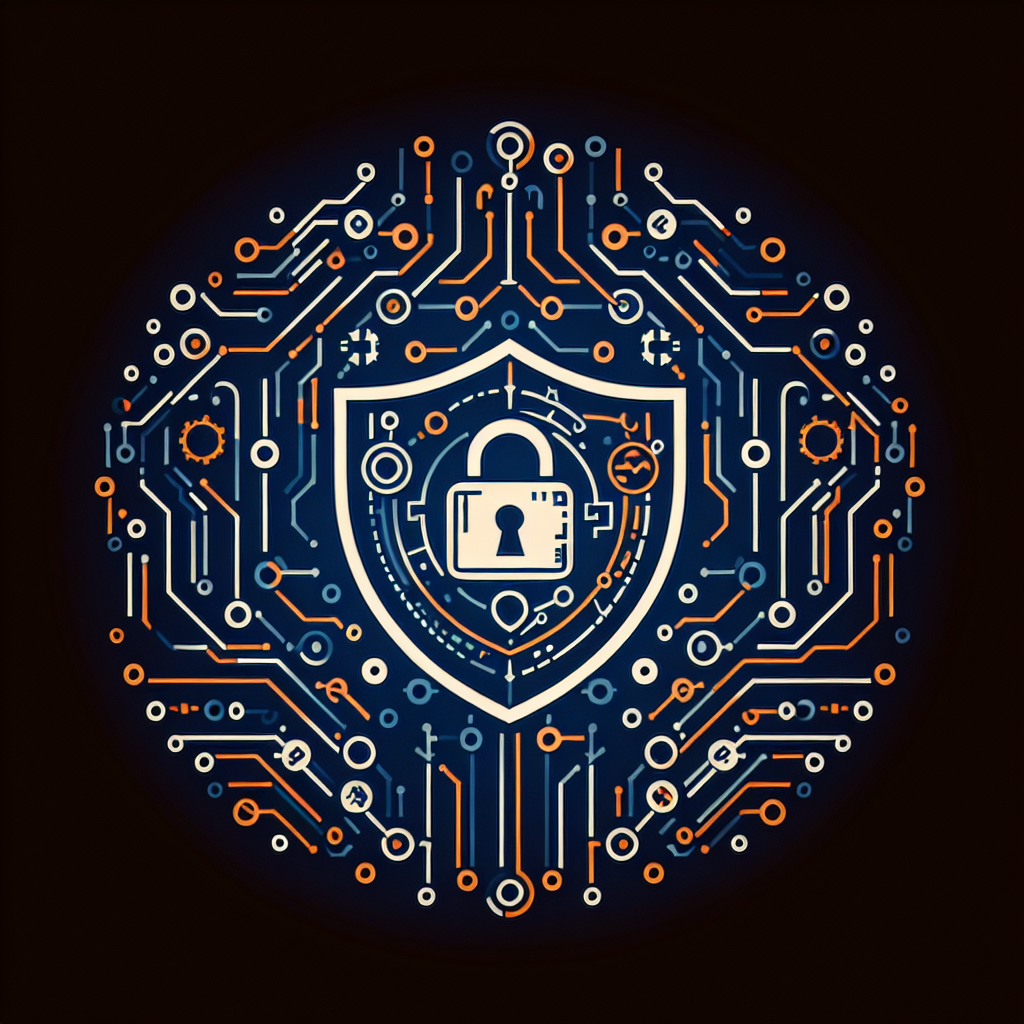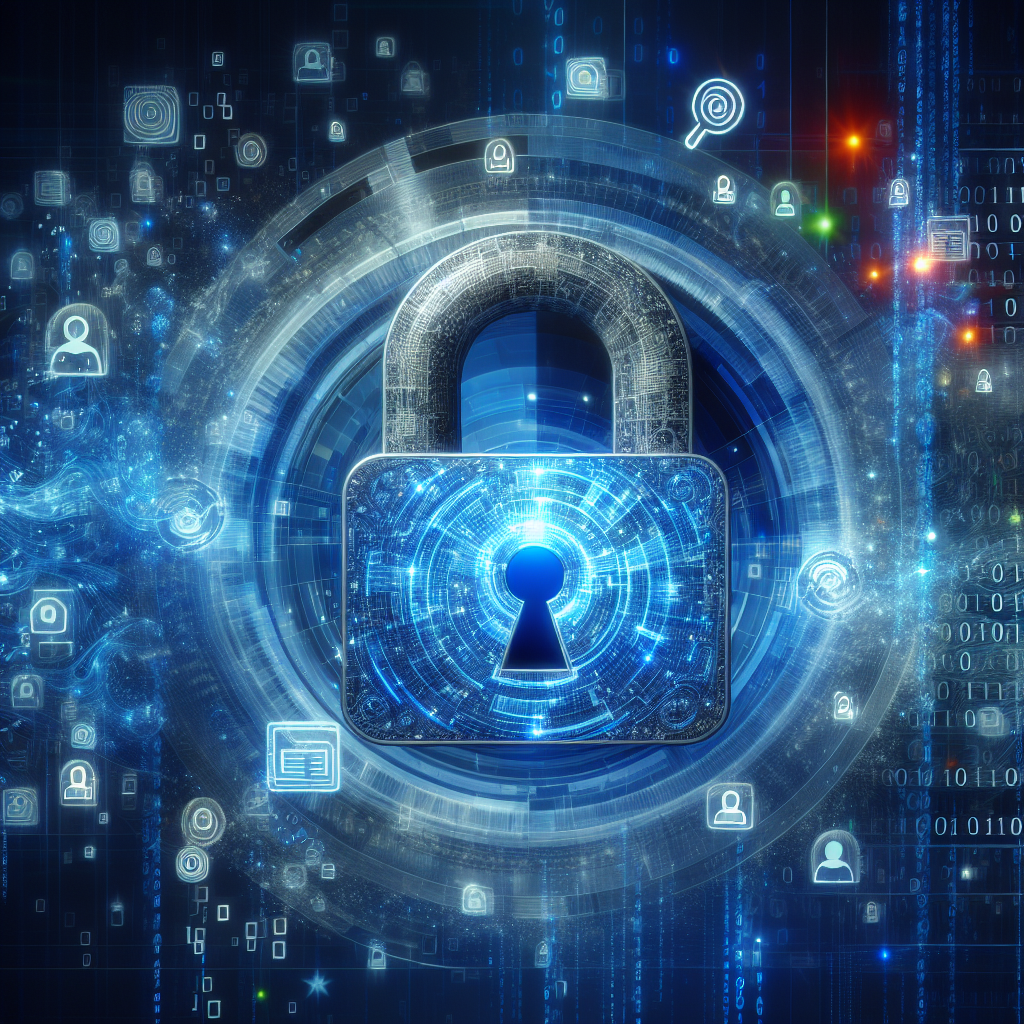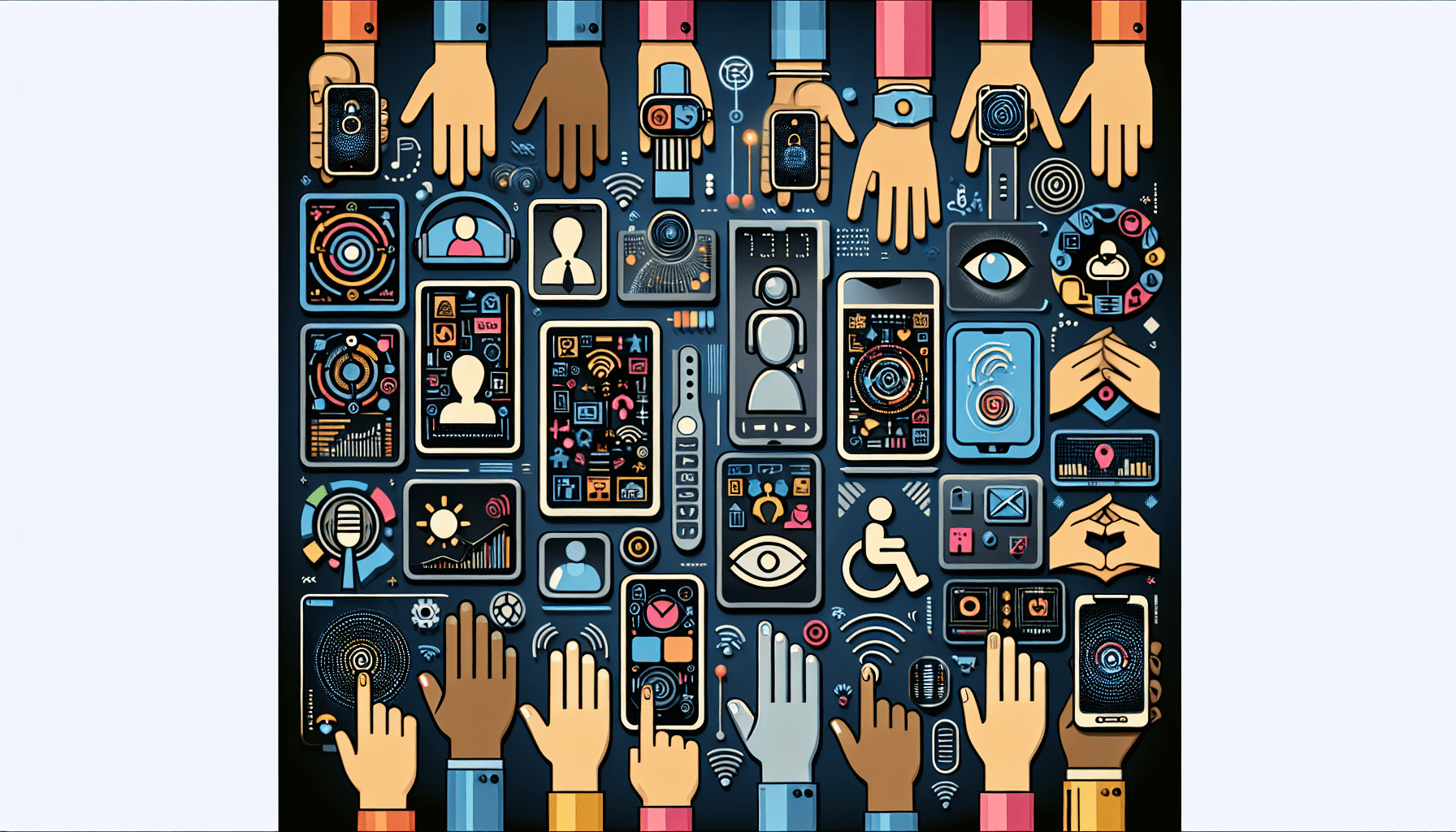Have you ever wondered what security measures are in place to protect your personal data when you interact with virtual assistants? In a world where artificial intelligence is becoming more integrated into our daily lives, it’s important to understand how your information is being safeguarded. This article will provide an overview of the security measures that are commonly used to protect user data in virtual assistant interactions, giving you peace of mind and helping you make informed decisions about your privacy. So, let’s dive into the world of virtual assistants and explore the measures that keep your data safe.

Data Encryption
Data encryption is one of the most fundamental security measures in place to protect user data in Virtual Assistant interactions. Encryption works by converting data into a code that can only be deciphered with a specific key. This ensures that even if unauthorized individuals gain access to the encrypted data, they will not be able to read or understand it. There are several encryption methods used in virtual assistant interactions, including end-to-end encryption, Transport Layer Security (TLS), and Secure Sockets Layer (SSL).
End-to-End Encryption
End-to-end encryption is a robust encryption method that ensures data remains encrypted throughout its entire journey from the user to the virtual assistant and vice versa. With end-to-end encryption, the data is encrypted on the user’s device, transmitted in its encrypted form, and only decrypted by the intended recipient. This means that even if intercepted during transmission, the data will remain secure and unreadable to unauthorized parties.
Transport Layer Security (TLS)
Transport Layer Security (TLS) is a cryptographic protocol used to secure the communication between two endpoints, such as a user’s device and the virtual assistant server. TLS provides encryption and authentication, ensuring that the data transmitted between the user and the virtual assistant is protected from eavesdropping or tampering. It establishes a secure connection, encrypts the data in transit, and verifies the identity of the server to prevent man-in-the-middle attacks.
Secure Sockets Layer (SSL)
Secure Sockets Layer (SSL) is the predecessor of TLS and works in a similar way to establish a secure connection between the user and the virtual assistant server. SSL encrypts the data, ensuring its confidentiality and integrity during transmission. While TLS has superseded SSL, the term “SSL” is still commonly used to refer to the encryption protocols used in virtual assistant interactions.
User Authentication
User authentication is another crucial aspect of protecting user data in virtual assistant interactions. It ensures that only authorized individuals can access and interact with the virtual assistant. There are various authentication methods employed, including password protection, two-factor authentication, and biometric authentication.
Password Protection
Password protection is a widely used method for user authentication. Users are required to create a strong and unique password that is known only to them. This password serves as the key to access their virtual assistant account. Implementing password requirements, such as a minimum length, a combination of letters, numbers, and symbols, and regular password updates, adds an extra layer of security.
Two-Factor Authentication
Two-factor authentication (2FA) adds an extra layer of security on top of password protection. With 2FA, users are required to provide a second form of authentication, typically something they have (such as a mobile device) or something they are (such as a fingerprint or facial recognition). This additional step ensures that even if someone gains access to a user’s password, they will still need the second factor to successfully authenticate.
Biometric Authentication
Biometric authentication utilizes unique physical or behavioral characteristics, such as fingerprints, facial or voice recognition, to verify a user’s identity. This method is considered highly secure as it is difficult to replicate or fake biometric features. Virtual assistants can use biometric authentication to ensure that only the authorized user can access and interact with the system.
User Privacy Settings
Protecting user privacy is essential in virtual assistant interactions. To ensure privacy, virtual assistants provide customizable privacy preferences, data sharing opt-out, and give users control over their personal information.
Customizable Privacy Preferences
Virtual assistants offer users the option to customize their privacy preferences based on their comfort level and specific privacy requirements. These preferences may include choosing what data is stored, how long it is retained, and who can access the information. By allowing users to tailor their privacy settings, virtual assistants empower individuals to make decisions about their own data and ensure it aligns with their privacy needs.
Data Sharing Opt-Out
Virtual assistants often gather data to improve their performance and enhance user experience. However, they also give users the ability to opt-out of data sharing. This allows users to restrict the collection and sharing of their personal information, giving them more control over how their data is handled.
Control Over Personal Information
Virtual assistants provide users with control over their personal information. Users can review and update their personal data, and even delete it if desired. By giving users the ability to manage their own data, virtual assistants empower individuals to have a say in the handling and storage of their personal information.
Data Storage
Secure data storage is vital for protecting user data in virtual assistant interactions. Several measures are implemented to ensure the confidentiality and integrity of stored user data, including the use of secure servers, regular data backups, and data retention policies.
Secure Servers
Virtual assistants utilize secure servers to store user data. These servers are protected from unauthorized access, physical damage, and potential security breaches. Security measures such as firewalls, intrusion detection systems, and network segmentation are typically employed to safeguard the servers where user data is stored.
Regular Data Backups
Regular data backups are essential to prevent data loss and ensure data recovery in the event of any unforeseen circumstances, such as system failures or cyberattacks. By regularly backing up user data, virtual assistants can restore information to its previous state and minimize the impact on users in case of any data-related incidents.
Data Retention Policies
Data retention policies define how long user data is stored before it is permanently deleted or anonymized. These policies are designed to comply with privacy regulations and ensure that personal data is not retained for longer than necessary. By adhering to data retention policies, virtual assistants can minimize the risk of data breaches and protect user privacy.

Voice Recognition Technology
Voice recognition technology plays a significant role in virtual assistant interactions, enabling users to interact with the system through speech. Robust security measures are implemented in voice recognition technology to ensure the accuracy, privacy, and security of user voice data. Some key components of voice recognition technology include voice biometrics, voice match, and speaker verification.
Voice Biometrics
Voice biometrics utilize unique vocal characteristics, such as pitch, tone, and pronunciation, to identify and authenticate individuals. By analyzing these vocal patterns, virtual assistants can verify the user’s identity and provide personalized responses and services. Voice biometrics add an additional layer of security to virtual assistant interactions, making it difficult for unauthorized individuals to impersonate the user’s voice.
Voice Match
Voice match is a feature that allows virtual assistants to recognize and distinguish between different users based on their voices. By matching the user’s voice pattern to a pre-registered voice profile, virtual assistants can provide personalized responses and tailored experiences to individual users. This feature enhances security by ensuring that only authorized users can access specific user accounts or settings.
Speaker Verification
Speaker verification is used to verify the authenticity of an individual’s voice by comparing it to a pre-recorded sample. Virtual assistants can utilize this technology to prevent unauthorized access to user accounts or data. By requiring users to provide a specific voice sample during the verification process, virtual assistants can ensure that only the authorized user can access sensitive information or perform certain actions.
Data Access Controls
Data access controls play a crucial role in protecting user data in virtual assistant interactions. These controls determine who can access, modify, or delete user data, and are typically implemented through role-based access controls, audit logs, and permission management.
Role-based Access Controls
Role-based access controls (RBAC) define the permissions and privileges granted to different roles within the virtual assistant system. By assigning specific roles to individuals, virtual assistants can ensure that only authorized personnel can access and manipulate user data. RBAC helps minimize the risk of unauthorized data access or misuse by restricting access to sensitive information to those who require it for their specific role or responsibility.
Audit Logs
Audit logs record and track user activity within the virtual assistant system. These logs capture information such as user actions, timestamps, and any changes made to user data. By maintaining comprehensive audit logs, virtual assistants can monitor and detect any suspicious or unauthorized activities, as well as provide an audit trail for forensic investigations.
Permission Management
Permission management allows virtual assistant administrators to grant or revoke specific permissions to users or roles. This granular control over permissions ensures that only authorized individuals have access to certain features or data. By managing permissions effectively, virtual assistants limit the risk of unauthorized access or data breaches, protecting user data and maintaining the integrity of the system.

Secure Voice Data Transmission
Virtual assistants utilize secure voice data transmission protocols to ensure the privacy and security of user voice interactions. These protocols include secure VoIP (Voice over Internet Protocol) protocols, Secure RTP (Real-time Transport Protocol), and media encryption.
Secure VoIP Protocols
VoIP protocols, such as the Secure Real-time Transport Protocol (SRTP), are used to securely transmit voice data over IP networks. These protocols encrypt voice packets, ensuring the confidentiality and integrity of the transmitted data. By utilizing secure VoIP protocols, virtual assistants protect user voice data from interception or unauthorized access during transmission.
Secure RTP (Real-time Transport Protocol)
Secure RTP (SRTP) is an extension of the RTP protocol specifically designed for secure transmission of real-time data, such as voice and video. SRTP provides encryption and authentication, protecting user voice data from eavesdropping or tampering. By implementing SRTP, virtual assistants ensure the privacy and security of voice conversations between users and the system.
Media Encryption
Media encryption refers to the encryption of voice data prior to transmission. By encrypting the voice data, virtual assistants ensure that even if intercepted during transmission, the content remains confidential and unreadable to unauthorized parties. Media encryption adds an additional layer of security to secure voice data transmission in virtual assistant interactions.
Third-Party Security Assessments
Virtual assistants often undergo third-party security assessments to validate and enhance the security of the system. These assessments include independent security audits, penetration testing, and vulnerability assessments.
Independent Security Audits
Independent security audits involve engaging external security professionals to thoroughly assess the virtual assistant system’s security controls, infrastructure, and processes. These audits involve reviewing the entire system architecture, conducting vulnerability assessments, and evaluating compliance with industry standards and best practices. Independent security audits provide an objective evaluation of the system’s security posture and identify any weaknesses or areas of improvement.
Penetration Testing
Penetration testing, also known as ethical hacking, involves authorized individuals attempting to exploit vulnerabilities within the virtual assistant system. This testing simulates real-world cyberattacks and helps identify potential security weaknesses or gaps. By performing regular penetration tests, virtual assistants can proactively address any vulnerabilities and strengthen their overall security posture.
Vulnerability Assessments
Vulnerability assessments involve identifying and classifying potential vulnerabilities within the virtual assistant system. These assessments typically include scanning the system for known vulnerabilities, reviewing system configurations, and analyzing potential security risks. By conducting vulnerability assessments on a regular basis, virtual assistants can prioritize and address any identified vulnerabilities to enhance the overall security of the system.

Secure Network Infrastructure
A secure network infrastructure is essential for protecting user data in virtual assistant interactions. Virtual assistants employ various measures to secure their network infrastructure, including firewalls, intrusion detection/prevention systems (IDS/IPS), and network segmentation.
Firewalls
Firewalls are a crucial component of network security. They act as a barrier between the internal network and external networks, monitoring and controlling incoming and outgoing network traffic. Virtual assistants utilize firewalls to prevent unauthorized access, filter potentially malicious traffic, and protect user data from external threats.
Intrusion Detection/Prevention Systems (IDS/IPS)
Intrusion detection/prevention systems (IDS/IPS) monitor network traffic and detect any suspicious or malicious activity. These systems can identify and alert administrators of potential security breaches or unauthorized access attempts in real-time. IDS/IPS play a vital role in maintaining the security of the virtual assistant network infrastructure.
Network Segmentation
Network segmentation involves dividing a network into separate segments, each with its own security controls and access restrictions. By segmenting the network, virtual assistants can isolate sensitive data or critical components, limiting the impact of any potential security breaches. Network segmentation enhances the overall security of the virtual assistant system by controlling access to specific resources and minimizing the potential attack surface.
Regular Software Updates and Patches
Regular software updates and patches are essential for maintaining the security of virtual assistant systems. These updates often include security bug fixes, vulnerability patching, and maintenance releases.
Security Bug Fixes
Software updates frequently include bug fixes that address known security vulnerabilities. By promptly applying these security bug fixes, virtual assistants ensure that any identified vulnerabilities are patched, reducing the risk of exploitation by malicious actors. Regularly updating the software helps mitigate the potential security risks and keeps the virtual assistant system resilient against evolving threats.
Vulnerability Patching
Vulnerability patching involves applying updates or patches specifically designed to address identified vulnerabilities in the virtual assistant system. By maintaining an up-to-date patching process, virtual assistants can proactively address known vulnerabilities, minimizing the risk of successful cyberattacks and data breaches.
Maintenance Releases
Regular maintenance releases provide general software updates that improve the performance, stability, and security of the virtual assistant system. These releases may include enhancements to the security protocols, updated encryption algorithms, or additional security features. By regularly releasing maintenance updates, virtual assistants stay up-to-date with the latest security practices and ensure the ongoing protection of user data.
In conclusion, virtual assistants adopt a range of comprehensive security measures to protect user data in interactions. Through data encryption, user authentication, privacy settings, secure data storage, voice recognition technology, data access controls, secure voice data transmission, third-party security assessments, secure network infrastructure, and regular software updates, virtual assistants prioritize the confidentiality, integrity, and privacy of user information. By implementing these security measures, virtual assistants provide users with a secure and trustworthy environment for their interactions, fostering confidence and peace of mind.





